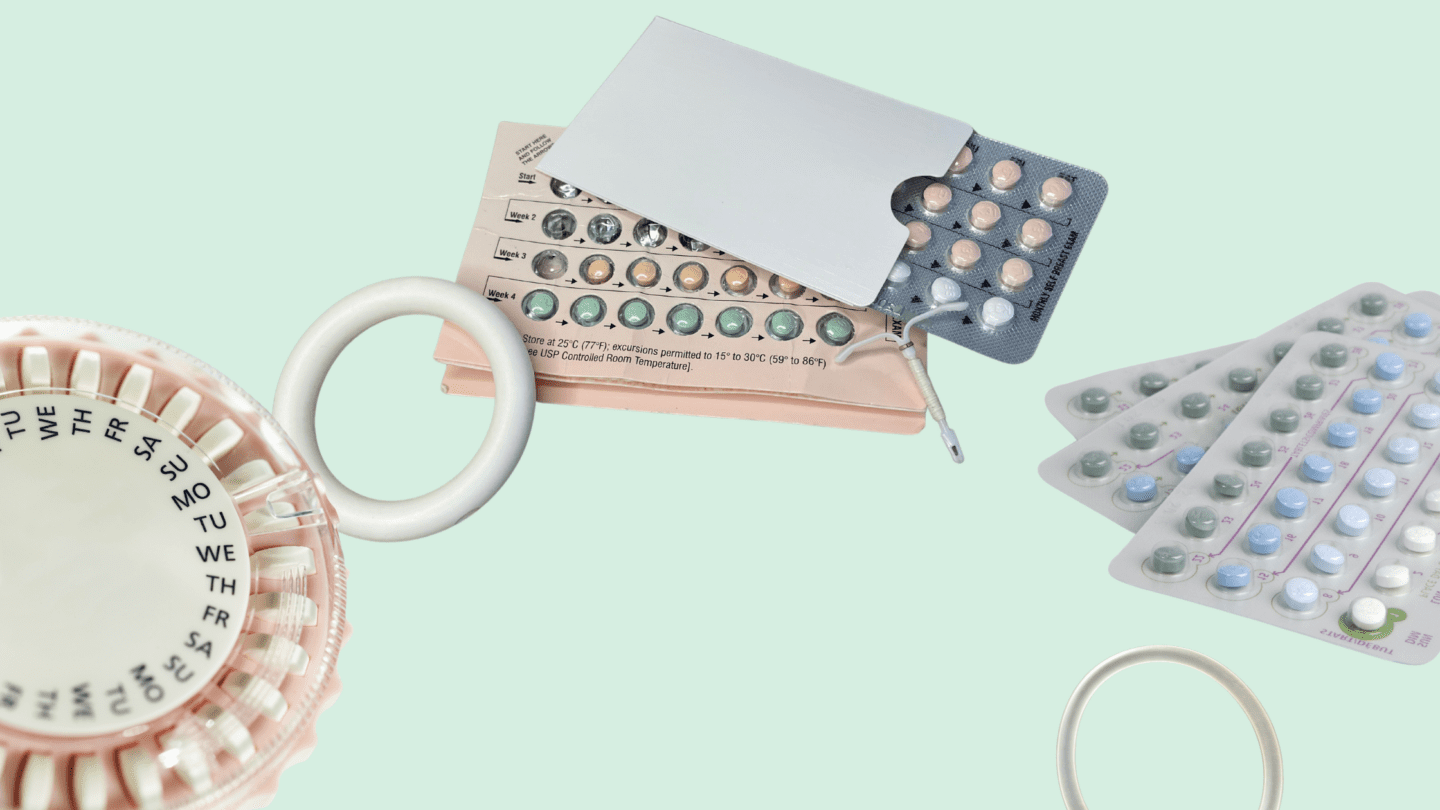Are you on the right for your body?
Many of us have been there before — experiencing negative side effects from can feel overwhelming and sometimes even out of control. Unfortunately, it’s a common experience that often requires a long process of trial and error to get past.
 When is it worth it to switch ?
When is it worth it to switch ?
The side effects you experience depend on a wide variety of factors — your genetic makeup, your levels, what type of you’re taking, and how that interacts with your body.
According to a survey by the Centers for Disease Control (CDC), over 65% of women ages 15-49 are currently using 1 — and one of the most common contraceptive methods is birth control pills.
People take two different types of birth control pills2: the mini pill (which uses ) and the combination pill (which uses and ). Hormonal contraceptives like the Pill can give side effects such as3:
- Acne
- Changes in menstrual flow or between periods
- Nausea or vomiting
- Breast tenderness, enlargement, or discharge
- Weight gain or weight loss
- Gingivitis
- Changes in
Your birth control side effects should not get in the way of your quality of life. Everyone deserves a method that fits their lifestyle and meets reproductive goals. If you’re experiencing negative side effects, you may want to consider switching.
Is adyn right for you? Take the quiz.
Switching can also help address specific health conditions4 you may be experiencing, including:
- Heavy, irregular, or painful periods
- Anemia (from excessive bleeding during your period)
- Improved acne
- Migraines
- Endometriosis
- Polycystic ovary syndrome (PCOS)5
- Fibroids
- Hormone imbalances
For example, after giving birth, your levels change abruptly and dramatically.6 This may mark a point in your life where it’s worth reconsidering which type of you want to use for your body.
 How to make the switch
How to make the switch
Before you decide to change , you should always consult with your doctor to confirm that the side effects you’re experiencing are related to your current contraceptive, and determine a better alternative together.
Tracking your symptoms is a great way to come prepared with data and better understand what’s happening to your body.
Like what you’re reading? Get the latest straight to your inbox 💌
Once you do this, you may realize that you’d like to use a different method of that has less negative side effects for you. Switching between brands or types may actually feel a little overwhelming to figure out — or like you’re trying to do some kind of terrible math equation.
This table below illustrates best practices for switching from one type of to another, so that you don’t lose pregnancy prevention coverage during the switch.
This table is adapted from the Reproductive Access Health Project,7 published in 2011. Always consult your doctor and/or pharmacist to make sure these guidelines apply to your specific .
 When to use backup
When to use backup
If you are concerned about becoming pregnant or not being protected during the transition period, you can also use backup to prevent pregnancy.
In particular, that means using either condoms, spermicide, or both. You can also decide to abstain from sex during the transition period, then start again when you have fully transitioned over.
Conclusion
Switching methods may help you alleviate unwanted side effects, or address new symptoms you’d like to manage. It’s healthy and normal to want to find the best possible for your body.
Always consult with the doctor before making the switch, so that you have all the information needed to choose what is the right fit for you.
adyn helps people find the right for their body by analyzing their genetics and hormones. Learn more about our science.
-
1. Daniels, PhD, K. (2018, December). Current Contraceptive Status Among Women Aged 15–49: United States, 2015–2017. Centers for Disease Control. https://www.cdc.gov/nchs/products/databriefs/db327.htm
2. MedlinePlus. (2020, October). Birth control pills – combination. https://medlineplus.gov/ency/patientinstructions/000655.htm
MedlinePlus. (2015, September). Estrogen and Progestin (Oral Contraceptives). https://medlineplus.gov/druginfo/meds/a601050.html
3. MedlinePlus. (2015, September). Estrogen and Progestin (Oral Contraceptives). https://medlineplus.gov/druginfo/meds/a601050.html
4. Jones, R. (2011, November). Beyond Birth Control: The Overlooked Benefits of Oral Contraceptive Pills. Guttmacher Institute. https://www.guttmacher.org/sites/default/files/report_pdf/beyond-birth-control.pdf
5. Department of Gynecology and Obstetrics. (2017). Hormonal contraception in women with polycystic ovary syndrome: choices, challenges, and noncontraceptive benefits. Dovepress – Open Access Journal of Contraception. Published. https://www.ncbi.nlm.nih.gov/pmc/articles/PMC5774551/
6. Hendrick, V. (1998). Hormonal changes in the postpartum and implications for postpartum depression. PubMed. Published. https://pubmed.ncbi.nlm.nih.gov/9584534/
7. American Family Physician. (2011, March). How to Switch Birth Control Methods. https://www.aafp.org/afp/2011/0301/p575.html#afp20110301p575-ut1
8. Kestelman, P. (1991). Efficacy of the simultaneous use of condoms and spermicides. Https://Pubmed.Ncbi.Nlm.Nih.Gov/1743276/. Published. https://pubmed.ncbi.nlm.nih.gov/1743276/









